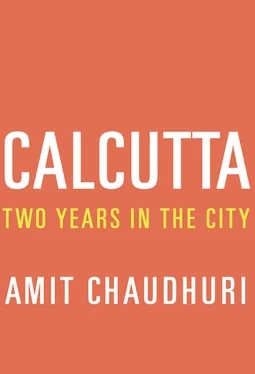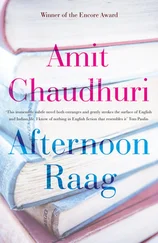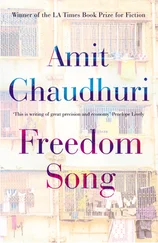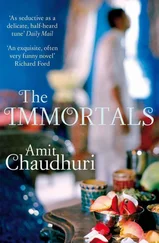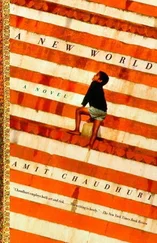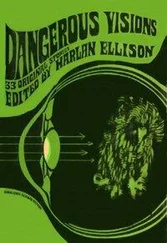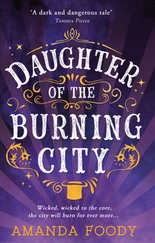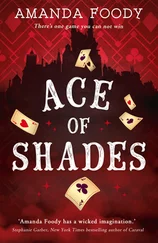Today, Signor Medda is not to be found — not just on Google, but also in the Taj Bengal.
“What did these chefs think of Calcutta?” I ask Mr. Mukherjee.
This seems to me a paramount question — I believe that, given the unique extremities of the profession, its frayed tempers and tears, its hunting after the aroma of perfection, a chef’s view of a city is different from anyone else’s. Which is why I returned to it twice.
Mr. Mukherjee gives me, inadvertently, three different responses in the conversation.
“The weather,” he says. “They cannot stand the weather. Of course, David Canazi”—noticing my blankness, he adds, “You know David Canazi, who started the Italian restaurant at the Hyatt, and is now running the one at HHI”—that is, Hotel Hindustan International (Indians adore abbreviations); noticing I’m nodding vigorously, if implausibly, Mr. Mukherjee continues—“for him it is different, he loves the place, he fell in love with a Bengali woman and married her — oh, he loves it here!”
The matter of love and the intercultural Cupid (the Orientalist William Jones had anyway pointed out that Cupid and the Hindu god Kama, with their aerial vantage point and amore-inducing bows and arrows, belong to the same teeming family of divinities) — this matter of love distracts me momentarily with the thought of Shaun Kenworthy. He’s someone who, thirty years ago, would have been an oxymoron or a contradiction in terms: an English chef. Well before the idea of the expatriate British chef (not to mention the rude, hyperventilating British chef) was turned into a commodifiable oddity by Gordon Ramsay, Shaun Kenworthy had come to Calcutta, to work at the Park Hotel. Given our residual fascination with our former colonial masters, Kenworthy was given a warm, overweening welcome; given our disenchantment with ourselves and the city we live in, the welcome was accompanied by a suspicion that he wasn’t good enough. Nevertheless, Kenworthy had a life in Calcutta outside the kitchen, and Kama took aim, ensuring he made this place his home. Calcutta’s Page 3 readers — followers of tabloid trivia — were, a few years ago, made privy to Mr. Kenworthy’s wedding pictures.
The second explanation Mr. Mukherjee gives me for the restiveness of the Italian chefs is that they “fail to understand totally vegetarian food.” Why is this so? Vegetarianism in Europe is hardly the outré fad it used to be in George Bernard Shaw’s era: in fact, many morally irreproachable people in the West are now vegetarians, as we well know.
No, it emerges that Mr. Mukherjee means a community that constitutes his regular clientele: he is too civilised to single them out by name, but it’s clear he’s referring to the Marwaris. This community has, as a rule, and for centuries, adhered to “total vegetarianism.” It’s logical that the economic demography in a city will be reflected in the demography of the restaurant in a five-star hotel; that, eventually, whoever it is that pays for the food will determine what shape and form the menu takes. Anteleno Medda may not have had time to grasp this; but Mr. Mukherjee, the head chef, knows it very well, as do other Bengalis, seething with envy at their lapsed suzerainty in their city.
I guide him gently towards this area of resentment.
“There are people who say,” I put to him, “that menus in Calcutta cater excessively to vegetarians.”
“No, that’s not true,” he says. “Of course, the largest group of customers which keeps coming back is Marwari.” This, in contrast to Bombay, say, where no one community necessarily possesses greater spending power than another and all kinds of people and tastes are encompassed by that ambiguous, uncomfortable category, “the rich.” “But Bengalis come as well — mainly during the Pujas and the Bengali New Year and of course during Christmas and New Year.” At other times they are presumably simmering resentfully about Marwari eating habits or migrating to America — there’s no use denying the undercurrent of contained disdain that the Bengalis and Marwaris feel for each other, a tacit staking of territory in which the latter now has the upper hand; nor that, without them, there would be relatively few partakers of night life and eating out — indeed, of the recent, celebrated, tinselly glimmer of the “new India”—in Calcutta. Not that the Bengalis in any way represent the values of the old bhadralok Calcutta, though they might like to think they do; their values are no different from the Marwaris’ or anyone else’s today, except they appear to be more at sea about how they relate to them, and to their own singular history. But Mr. Mukherjee, the head chef, is undoubtedly a bhadralok, or at least astute; he makes no tasteless remarks about the vegetarians. “It’s easy to have a non-vegetarian menu. One pork dish, one seafood dish, one chicken, one beef, one lamb, and you’re done! But it’s harder to think up a vegetarian menu with flair and variety. That’s why people keep saying things like there’s very little interesting vegetarian fare in this restaurant.”
Of all human types, the Bengali experiences the most acute deprivation I’ve noticed anywhere on being denied his or her quota of animal protein at mealtime. It could be goat’s meat, chicken, fish, or even the common egg; but one of these needs to make an appearance before lunch and dinner draw to an absolute close. A vegetarian meal is not a meal; it’s a preamble, a preface. And animal protein isn’t a main course for the Bengali; it’s what wine is for the Frenchman — something integral to the meaning of mealtime, something to unconsciously savour.
This preference, of course, could be explained away by looking at the past, but exactly which past it’s difficult to decide. For instance, Bengali Hindus are traditionally, and roughly, divided into two sects: the Shaktya (or the followers of Kali) and the Vaishnavas (the devotees of Krishna). These are no longer living categories, but the yearning, in the Bengali, for something more interesting than vegetables in his or her diet could be a remnant of the influence of Shaktya sacrifice, involving the bloody and passionate slaughter of the goat during the Pujas, portrayed with a mixture of horror and amusement by Nirad C. Chaudhuri in The Autobiography of an Unknown Indian . My father’s family belonged to the Vaishnava sect, known more for its ecstasies and devotional pieties and its figurehead Chaitanya’s message of love. My mother used to once tease him for his family’s symbolic slaughter, in Sylhet, of a white pumpkin during the Pujas, in lieu of a goat. Indeed, vegetarian food used to be reserved as a punishment, an austerity, for Bengali widows, who had to wear white, shave their heads, and even forgo garlic, onions, and root vegetables in order to repent at leisure the deaths of their husbands. Though that world is largely vanished, you see that unmistakable widow’s air of lack — a strange, irremediable melancholy — among Bengalis at parties where no meat or fish is being served. On the other hand, goat’s meat at a buffet or wedding immediately attracts a queue, and brings back that sacrificial mood of revelry, the upbeat, impatient hunger for the recently killed animal.
The other event that comes to mind in this context is the birth, out of nowhere in the early nineteenth century, of the modern Bengali — a person (unlike, say, the Marwari) without much of a history, as Bankimchandra had lamented. From the very beginning, this arriviste and upstart anointed himself with the blood of the animal — in fact, of the so-called sacred cow. Members of the radical boys’ club, Young Bengal, began in the 1820s to scandalously, and pointedly, eat beef — in order to subvert outdated and hollow mores, to outrage their contemporaries, to transgress taboos. Beef-eating was at once the precursor and the opposite of the Gandhian hunger strike; not a moment of self-denial, but an unthinkable self-indulgence — a political, anti-religious action undertaken (as these things are) with religious fervour. It earned the perpetrators much scorn and laughter.
Читать дальше
